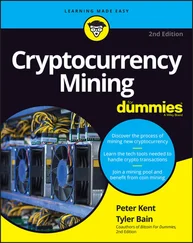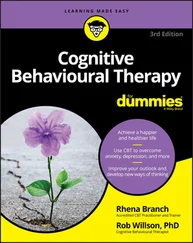1 ...8 9 10 12 13 14 ...33 After Baptism, Christians — when they’re at the age of reason — are expected to publicly profess the faith by reciting or singing the Nicene Creed at Mass with the entire congregation. Want to know more about what happens at Baptism? Head over to Chapter 8.
The most crucial and influential part of Sacred Tradition is the Creed. The word comes from the Latin credo, meaning “I believe.” A creed is a statement or profession of what members of a particular church or religion believe as being essential and necessary. The two most ancient and most important creeds are the Apostles’ Creed and the Nicene Creed; the latter is recited or sung every Sunday and on holy days of obligation at Catholic Masses all over the world. (Like Sundays, holy days of obligation are specific days in the calendar year on which Catholics are required to go to Mass. See Chapter 10for more on holy days.) The Nicene Creed was the fruit of the Council of Nicea, which convened in A.d. 325 to condemn the heresy of Arianism (see Chapter 4) and to affirm the doctrine of the divinity of Christ. The oldest creed, however, is the Apostles’ Creed. Although it’s doubtful that the Twelve Apostles themselves wrote it, the origin of this creed comes from the first century A.d.
A sophisticated development of the Apostles’ Creed, which is a Christian statement of belief attributed to the Twelve Apostles, the Nicene Creed reflects one’s loyalty and allegiance to the truths contained in it. The Catechism of the Catholic Church explains that the Creed is one of the four pillars of faith, along with the Ten Commandments, the seven sacraments, and the Our Father. The text of the Apostles’ Creed and the Nicene Creed, which follows, succinctly summarizes all that Catholicism regards as divinely revealed truth:
The Apostles’ Creed:I believe in God, the Father Almighty, the Creator of heaven and earth, and in Jesus Christ, His only Son, our Lord: Who was conceived by the Holy Spirit, born of the Virgin Mary, suffered under Pontius Pilate, was crucified, died, and was buried. He descended into hell. On the third day He arose again from the dead. He ascended into heaven and is seated at the right hand of God the Father Almighty, from there He will come to judge the living and the dead. I believe in the Holy Spirit, the holy Catholic Church, the communion of saints, the forgiveness of sins, the resurrection of the body, and life everlasting. Amen.
The following list explains the Apostles’ Creed in detail, so you can get a better understanding of this Sacred Tradition and the Catholic belief system. (It’s divided into 12 articles for easier digestion.)
Article 1: I believe in God, the Father Almighty, the Creator of heaven and earth. This affirms that God exists, that He’s one God in three persons, known as the Holy Trinity, and that He created the known universe. Creation is understood as making something from nothing. The created world includes all inanimate matter, as well as plant, animal, human, and angelic life.
Article 2: And in Jesus Christ, His only Son, our Lord. This attests that Jesus is the Son of God and that He’s most certainly divine. The word Lord implies divinity, because the Greek word Kyrios and the Hebrew word Adonai both mean “Lord” and are only ascribed to God. So the use of Lord with Jesus is meant to profess His divinity. The name Jesus comes from the Hebrew word Jeshua, meaning “God saves.” So Catholics believe that Jesus is Savior.
Article 3: Who was conceived by the Holy Spirit [and] born of the Virgin Mary. This affirms the human nature of Christ, meaning that He had a real, true human mother, and it also affirms His divine nature, meaning that He had no human father, but by the power of the Holy Spirit He was conceived in the womb of the Virgin Mary. Therefore, He’s considered both God and man by Christians — fully divine and fully human. The union of the two natures in the one divine person of Christ is called the Incarnation from the Latin word caro meaning “flesh.” The Latin word Incarnatio or Incarnation in English translates to “becoming flesh.”
Article 4: [He] suffered under Pontius Pilate, was crucified, died, and was buried. The human nature of Christ could feel pain and actually die, and He did on Good Friday. The mention of Pontius Pilate by name wasn’t meant so much to vilify him forever in history but to place the Crucifixion within human history. So reference is made to an actual historical person, the Roman governor of Judea appointed by Caesar, to put the life and death of Jesus within a chronological and historical context. It also reminds the faithful that one can’t blame all Jews for the death of Jesus, as some have erroneously done over the ages. Certain Jewish leaders conspired against Jesus, but a Roman gave the actual death sentence, and Roman soldiers carried it out. So, both Jew and Gentile alike shared in the spilling of innocent blood. Any and all anti-Semitism is repugnant and cannot be based on the Crucifixion of Jesus.
Article 5: He descended into hell. The third day He arose again from the dead. The hell Jesus descended into wasn’t the hell of the damned, where Christians believe that the devil and his demons reside. Hell was also a word that Jews and ancient Christians used to describe the place of the dead, both the good and the bad. Before salvation and redemption, the souls of Adam and Eve, Abraham, Isaac, Jacob, David, Solomon, Esther, Ruth, and so on all had to wait in the abode of the dead, until the Redeemer could open the gates of heaven once more. They weren’t paroled from hell for good behavior.This passage affirms that on the third day He rose, meaning Jesus came back from the dead of His own divine power. He wasn’t just clinically dead for a few minutes. He was dead dead; then He rose from the dead. More than a resuscitated corpse, Jesus possessed a glorified and risen body.
Article 6: He ascended into heaven and is seated at the right hand of God the Father Almighty. The Ascension reminds the faithful that after the human and divine natures of Christ were united in the Incarnation, they could never be separated. In other words, after the saving death and Resurrection, Jesus didn’t dump His human body as if He didn’t need it anymore. Catholicism teaches that His human body will exist forever. Where Jesus went, body and soul, into heaven, the faithful hope one day to follow.
Article 7: From there He will come to judge the living and the dead. This article affirms the Second Coming of Christ at the end of the world to be its judge. Judgment Day, Day of Reckoning, Doomsday — they’re all metaphors for the end of time when what’s known as the General Judgment will occur. Catholics believe that after the death of any human person, immediate private judgment occurs, and the person goes directly to heaven, hell, or purgatory — an intermediate place in preparation for heaven. (For more on purgatory, see Chapter 18.) At the end of time, when General Judgment happens, all the private judgments will be revealed, so everyone knows who’s in heaven or hell and why. Private judgment is the one that Catholics are concerned about most, because immediately after death, people are judged by their faith or lack of it and how they practiced that faith — how they acted and behaved as believers. General Judgment is merely God’s disclosure of everyone’s private judgment. It’s not an appeal of prior judgment, nor is it a second chance.
Article 8: I believe in the Holy Spirit. This part reminds the believer that God exists in three persons: the Holy Trinity — God the Father, God the Son, and God the Holy Spirit. What’s referred to as the Force in the movie Star Wars isn’t the same as the Holy Spirit, who is a distinct person equal to the other two — God the Father and God the Son.
Читать дальше












